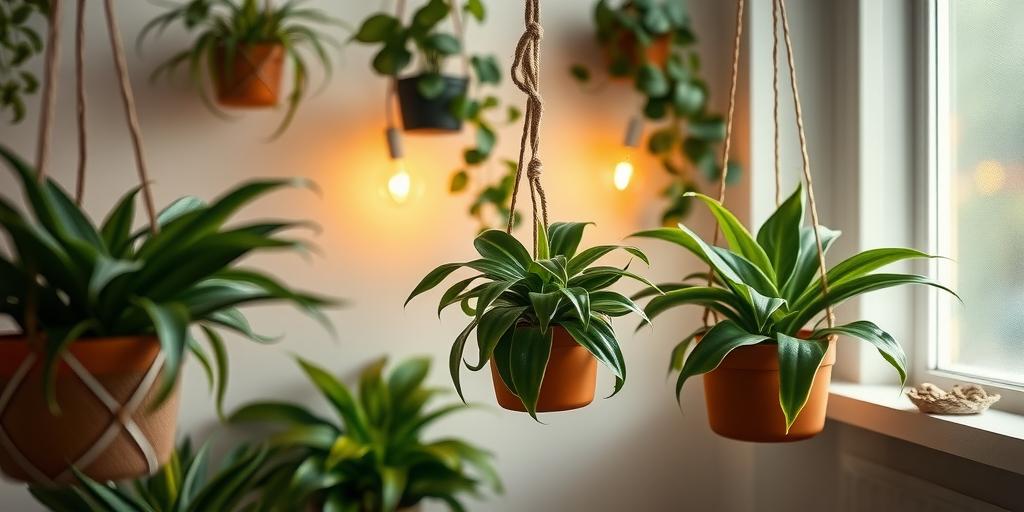
Best Low Light Hanging Plants for Humid Bathrooms (2025)
Discover the best low-light hanging plants that thrive in humid bathrooms! From easy-care ferns to air-purifying pothos, this guide helps you choose the perfect greenery for your space.
Introduction
Did you know that bathrooms with plants can feel 10% more relaxing? If you’ve ever struggled to find the perfect greenery for your dim, steamy bathroom, you’re in luck! Not all plants can handle low light and high humidity, but the right ones will flourish—adding life, freshness, and even purifying the air. In this guide, we’ll explore the best low-light hanging plants that love humid conditions, making your bathroom a lush, spa-like retreat.
Why Choose Hanging Plants for Humid Bathrooms?
Hanging plants are a fantastic choice for bathrooms, especially those with limited space. Since bathrooms tend to be smaller than other rooms, utilizing vertical space with hanging planters keeps surfaces clear while still bringing in greenery. Plus, many houseplants thrive in the naturally humid conditions of a bathroom, making them easier to care for than in drier rooms.
Another great benefit is that certain plants can help absorb excess moisture in the air, reducing the risk of mold growth. This is especially useful in bathrooms with poor ventilation. And let’s not forget the aesthetic appeal—hanging plants soften hard surfaces, add a touch of nature, and create a spa-like atmosphere.
Top Low Light Hanging Plants for Humid Bathrooms
Not all plants can handle the unique conditions of a bathroom, but these five are perfect for low light and high humidity.
1. Devil’s Ivy (Epipremnum Aureum)
If you’re new to houseplants, Devil’s Ivy is a great starter plant. It’s incredibly hardy and can survive even if you forget to water it occasionally. This trailing plant thrives in indirect light, making it ideal for bathrooms with small or frosted windows.
One of its best features is its air-purifying ability—it helps remove toxins like formaldehyde and benzene from the air. Plus, its long vines can grow several feet, creating a beautiful cascading effect when hung from a basket or shelf.
2. Boston Fern (Nephrolepis Exaltata)
Boston Ferns are classic bathroom plants because they love humidity. In fact, they struggle in dry air, so a steamy bathroom is the perfect environment for them. Their feathery, arching fronds add a lush, soft texture to any space.
Keep in mind that these ferns need consistent moisture, so check the soil regularly. If the air is too dry, misting the leaves occasionally can help. They do best in low to medium indirect light, making them a great fit for bathrooms with minimal natural light.
3. Spider Plant (Chlorophytum Comosum)
Spider Plants are one of the most adaptable houseplants out there. They can tolerate a range of light conditions, from bright indirect light to lower light, making them versatile for different bathroom setups.
One of the coolest things about Spider Plants is how they produce “spiderettes”—little baby plants that dangle from the mother plant. These can be snipped off and propagated in water or soil, giving you more plants for free. They’re also great at filtering indoor air pollutants, making your bathroom fresher.
4. Philodendron Heartleaf (Philodendron Hederaceum)
For a fast-growing, low-maintenance option, the Heartleaf Philodendron is a winner. Its heart-shaped leaves trail beautifully from hanging baskets, adding a romantic, jungle-like vibe to your bathroom.
This plant thrives in warm, humid air, so a bathroom is an ideal spot. It can tolerate lower light but will grow faster with a bit more indirect sunlight. Just be sure not to overwater—let the top inch of soil dry out between waterings.
5. Staghorn Fern (Platycerium Bifurcatum)
If you want something truly unique, a Staghorn Fern is a great choice. Its antler-like fronds make a striking statement, whether mounted on a board or hung in a basket.
These ferns love high humidity and indirect light, so a bathroom is a perfect home for them. They absorb moisture through their fronds, so occasional misting helps keep them happy. Just make sure they’re not sitting in soggy soil, as this can lead to root rot.
Care Tips for Hanging Plants in Bathrooms
Even though these plants are well-suited for bathrooms, they still need proper care to thrive. Here are some key tips to keep them healthy:
Watering: Avoid Overwatering
Bathrooms are naturally humid, so plants don’t dry out as quickly as they would in other rooms. Always check the soil moisture before watering—stick your finger about an inch into the soil. If it feels dry, it’s time to water. If it’s still damp, wait a few more days. Overwatering is one of the most common causes of houseplant problems.
Light: Supplement If Needed
While many of these plants tolerate low light, they still need some indirect sunlight to grow well. If your bathroom has no windows, consider placing them under artificial grow lights for a few hours a day. Alternatively, rotate them occasionally with plants in brighter spots to give them a light boost.
Pruning: Encourage New Growth
Regularly trim yellow or dead leaves to keep your plants looking fresh and healthy. Pruning also encourages new growth, making your plants fuller and more vibrant. For trailing plants like Devil’s Ivy or Philodendron, you can trim back long vines to maintain a neat appearance.
Fertilizing: Feed During Growing Season
During spring and summer, when plants are actively growing, a diluted liquid fertilizer once a month can give them a nutrient boost. However, avoid fertilizing in winter when growth slows down. Over-fertilizing can harm plants, so always follow the instructions on the label.
By choosing the right plants and following these care tips, you can create a lush, green oasis in your bathroom that thrives in the humid environment. Whether you prefer the cascading vines of Devil’s Ivy or the unique fronds of a Staghorn Fern, there’s a perfect hanging plant for every bathroom.
Conclusion
Transforming your bathroom into a green oasis is easier than you think! With the right low-light hanging plants, you can enjoy a fresher, more vibrant space—even in high humidity. Whether you opt for a cascading pothos or an elegant staghorn fern, these plants will thrive with minimal effort. Ready to get started? Pick your favorite and let nature do the rest!
